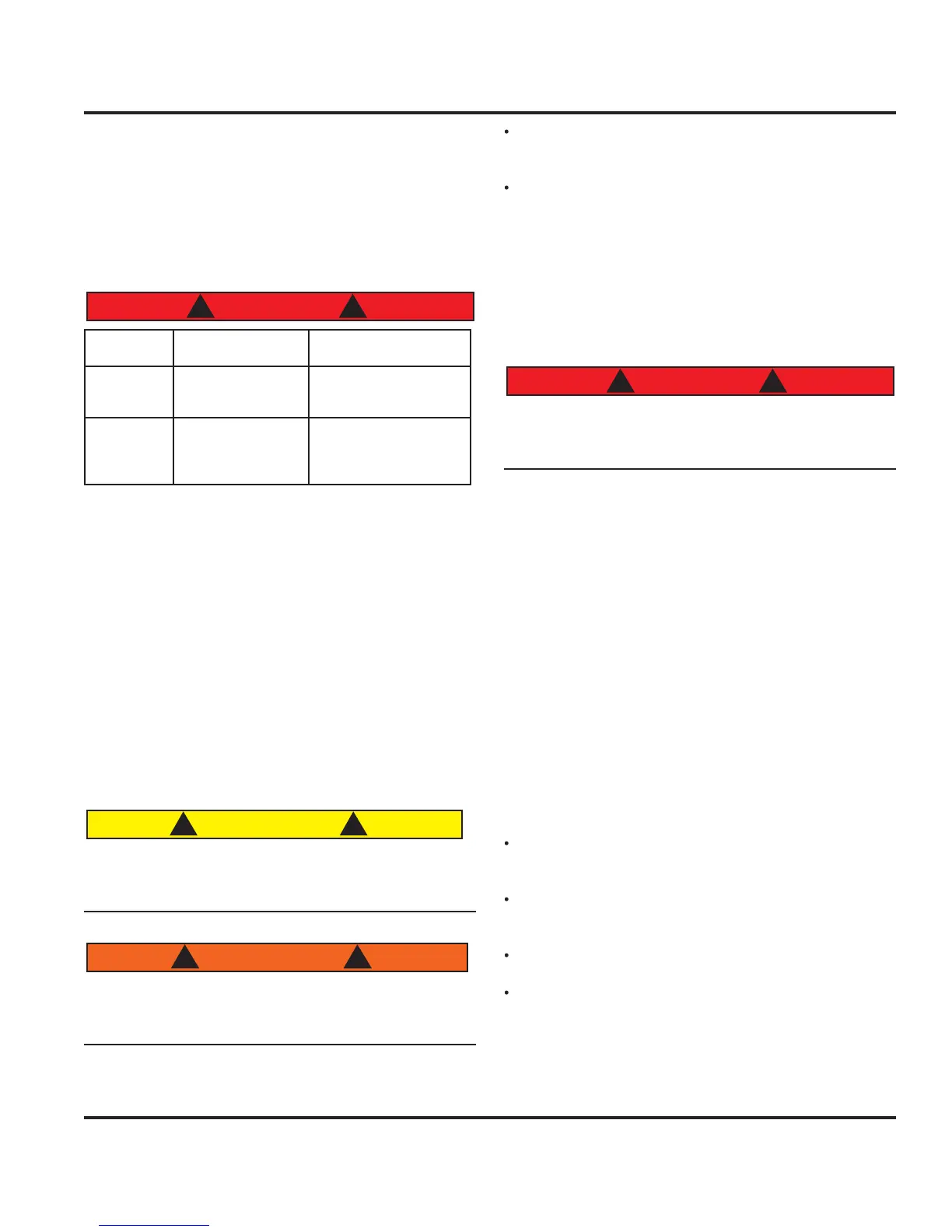nt
r 1
• Boatin
Safet
4.
WHY
Because
arbon Monoxide is an odorless, color-
less
as that prevents the blood
rom carr
in
ox
en
to the vital or
ans. C
Carbon Monoxide
is 200 times
more likel
to replace ox
en in the blood
heck the s
mptoms of Carbon Monoxide poisonin
in
this chapter
4.2.4
a
ain ri
ht now, so
ou will be able to
reco
nize these s
mptoms should the
ever arise.
DANGER
! !
Exposur
100 – 400 PPM
parts per million
n
ati
ue resemblin
the
lu.
i
m
x
osure
4
–
PPM
auses severe headaches,
drowsiness, nausea, and
ap
eart rate
xtr
m
x
u
over
PPM r
t
n
n
n
-
ess, convulsions, heart
or respirator
failure, and
t
an
reported cases o
arbon Monoxide poisonin
eterm
ne
t
at w
e v
ct
ms are aware t
e
are not
well, the
become so disoriented, the
are unable to save
themselves b
either exitin
the buildin
or callin
or
assistance. Also, children and pets ma
be affected first.
arbon Monoxide
as is produced when an
t
pe o
uel
is incompletel
burned. Gasoline en
ines and fuel burn-
in
appliances
urnace,
ireplace, oven, stove, water
heater, etc.
also, space heaters,
as, and charcoal
rills
roduce C
.
xtended operation o
unvented
uel burnin
appliances
ran
e, oven, fireplace, etc.
can build up hi
h C
lev-
l
.
CAUTION
! !
his alarm will onl
indicate the presence of Carbon
onoxide
as at the sensor. Carbon Monoxide
as
a
be present in other areas
WARNING
! !
o reduce the risk of Carbon Monoxide poisonin
, test
he alarm’s o
eration after the boat has been in stor-
e, before each trip, and once a week durin
use
N
T attempt to test the alarm b
an
other
means than b
usin
the Test
Reset button.
N
T attempt to produce
to test the alarm. The
Test
Reset button tests all
unctions o
the alarm and is
the onl
safe wa
to be sure the alarm is workin
prop-
rl
nce a
ain, here and now, check in the DC Electric
hapter on the operation o
our
detector. Learn how
to use it, how it works, what the alarm si
nals are, and
w
at
our response s
ou
e.
DA NG ER
! !
Actuation of
our CO alarm indicates the presence of
Carbon Monoxide
CO
which will KILL YOU! If the
arm soun
s
1. Press the Reset
ilence button
2.
all Emer
enc
ervices: Write the number here
____________________________
. Immediatel
move to
resh air, outdoors, or to an open
window or door. Do a head count to check that all persons
are accounted for. Do not re-enter the premises nor move
awa
rom an open door or window until the emer
enc
responders have arrived, the premises have been aired
ut, an
our a
arm rema
ns
n
ts norma
operat
on.
4. A
ter
ollowin
steps 1, 2, and 3, i
our alarm reacti-
vates in a 24 hour period, repeat steps 1 – 3 and call a
uali
ied a
liance technician:
Write the number here _________________________
ere to
nsta
arms
For minimum protection, C
alarms should be
nsta
e
near a
s
eep
n
areas.
For maximum protection, C
alarms should be
nsta
e
n a
s
eep
n
areas.
Wh
r
n
t t
In
t
ll Al
rm
ot behind
urniture, drapes, closets, or areas that will
l
k
ir fl
w t
th
l
rm

